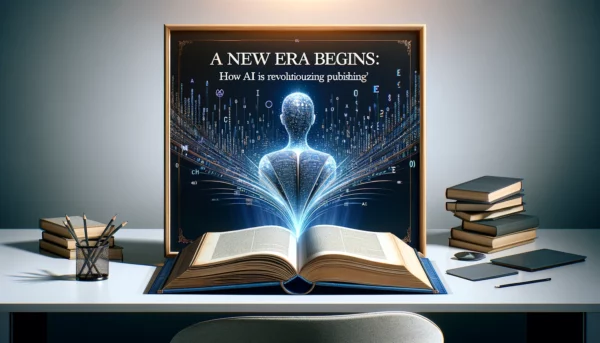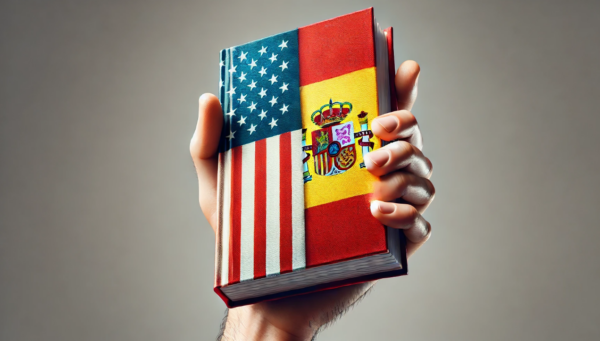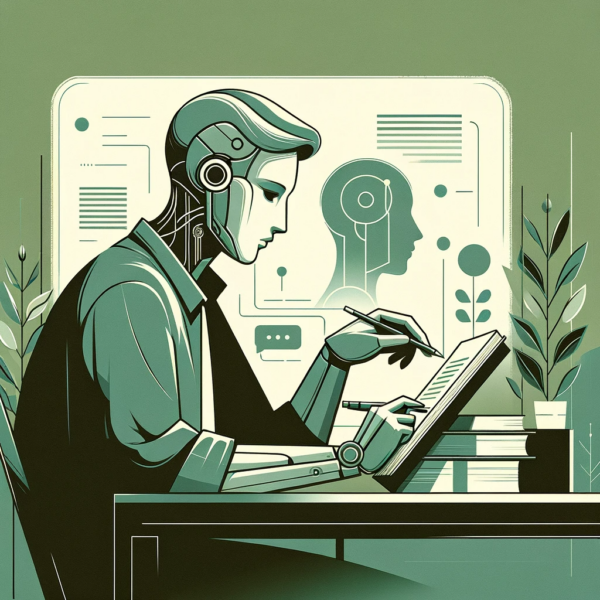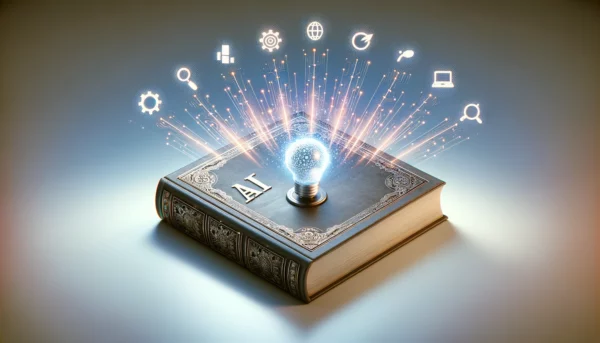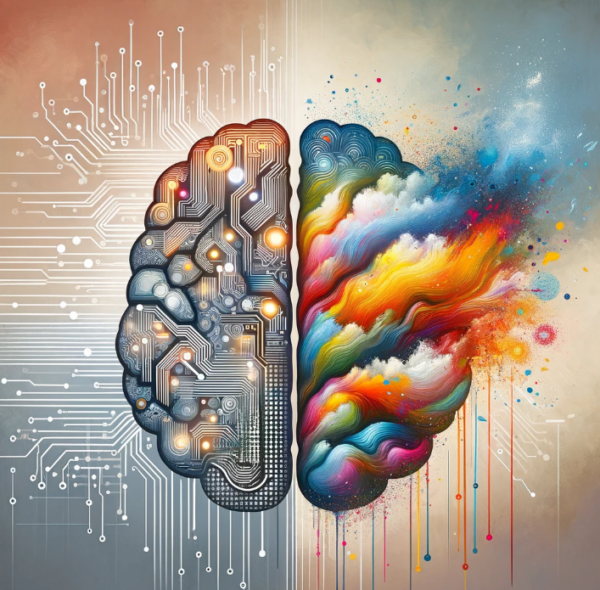Imagine a world where bedtime stories are brought to life by both the flick of an author’s pen and the magic of artificial intelligence. While it may sound futuristic, this is happening today. Authors, illustrators, and publishers are harnessing AI to create captivating children’s books faster and at a fraction of the cost. According to MarketsandMarkets, the global AI market is projected to grow from $58.3 billion in 2021 to a staggering $309.6 billion by 2026. AI’s reach extends beyond adult literature into the world of children’s books, transforming how stories are illustrated, produced, and published.
AI’s role isn’t just limited to accelerating production. It’s also transforming the creative possibilities for self-published authors who dream of sharing their stories with little readers but may lack the budget for traditional illustrations. At Spines, a publishing platform combining human expertise with cutting-edge AI, we’ve seen firsthand how AI can be an author’s best friend in producing beautiful, professional, and affordable children’s books without compromising quality. Ready to see what AI can do in children’s literature? Let’s turn the page.
The Rise of Artificial Intelligence in Children’s Books
The use of artificial intelligence in children’s books is revolutionizing the way stories are brought to life. AI-generated images and illustrations are becoming increasingly popular, offering a new dimension of creativity and efficiency. Imagine a world where a story about a magical forest can be illustrated in minutes, with every tree and creature perfectly tailored to the narrative. This is the power of AI tools in action.
AI-generated images can be created quickly and efficiently, making them an attractive option for publishers and authors who want to produce high-quality content without the need for extensive illustration work. However, some critics argue that AI-generated images lack the creativity and originality of human-created artwork. While AI can replicate styles and generate detailed visuals, the unique touch of human artists—the subtle nuances and emotional depth—can sometimes be missing.
Despite these concerns, AI-generated images are becoming more prevalent in children’s books. Many publishers are using AI tools to create illustrations and graphics that are both engaging and educational. For instance, AI can generate images that adapt to the educational content of a story, making learning more interactive and fun for young readers. Some authors are even using AI-generated images to create personalized stories for their readers, adding a unique touch to each book.
Why AI in Children’s Books? The New Creative Frontier
Once upon a time, creating a children’s book was a labor-intensive process involving lengthy edits, rounds of artistic feedback, and more hours of illustration than most could imagine. According to the International Publishers Association, it can take up to six months or more to publish a book traditionally. With AI, however, authors and illustrators are experiencing a creative renaissance. Not only does AI make the process faster, but it also opens doors for aspiring authors and illustrators who may lack traditional resources.
Using AI tools, authors are transforming their stories into visual narratives that captivate young minds. At Spines, our advanced technological approach helps authors tackle these challenges, allowing them to embrace self-publishing and publish their books in under 30 days—compared to the 6+ months that traditional publishing often takes. Imagine uploading your manuscript today and sharing it with the world next month! AI is truly rewriting the script.
AI-Generated Images: Bringing Stories to Life, One Pixel at a Time
When it comes to children’s books, AI images are becoming essential. In a genre where vibrant colors and engaging illustrations can make or break a story, AI-generated images are proving to be a game-changer. Rather than waiting weeks for hand-drawn illustrations, authors can now use platforms like DALL-E and Adobe Photoshop to generate artwork in minutes. According to Adobe’s internal data, AI-powered tools can cut down production time by up to 50%. This instant turnaround allows for richer, more dynamic storytelling.
The beauty of AI-generated images lies in their adaptability. Need a forest at dusk for your fairytale setting? Or a magical kingdom where dragons roam? AI tools can create illustrations tailored precisely to your story’s needs, giving authors full control over every pixel and color. For authors who want a hands-on experience, Spines offers an AI-powered cover design tool, allowing them to experiment with bestseller-inspired cover options. And who knows? With a bit of AI magic, your book cover might just go from “meh” to “mesmerizing.”
AI Tools for Children’s Book Authors: A Storyteller’s Toolkit
The list of AI tools available for authors is almost as varied as children’s literature itself. From idea generation to final formatting, AI offers something for every part of the publishing process. Whether you’re using ChatGPT for brainstorming story ideas, DALL-E for creating AI artwork, or Adobe Photoshop to add those finishing touches, AI is transforming every stage of book creation.
For authors seeking more than just art, Spines offers a complete publishing suite. From proofreading to audiobook creation, we guide authors through each step of the publishing journey. Imagine having your manuscript reviewed, proofread, and illustrated all in one place! The ease and efficiency provided by AI mean that authors can now create, publish, and distribute children’s books faster than ever before.
Character and World Creation with AI: Crafting Wonder for Little Minds
Creating an engaging character can be one of the most challenging aspects of writing for children. From mischievous animals to brave heroes, AI-generated illustrations, often referred to as AI art, bring characters to life with delightful precision. AI tools can even craft entire worlds, providing rich settings that enhance the story and immerse young readers in magical places.
However, while AI is a great tool, it doesn’t replace human creativity—it complements it. AI can provide the foundation, but it’s the author’s unique vision that breathes life into characters. For authors who want to balance tech with a human touch, Spines offers access to both AI-driven design and professional illustrators, ensuring that your book is uniquely yours.
Creating Personalized Children’s Books with AI
One of the most exciting applications of AI in children’s books is the creation of personalized stories. Imagine a book where the main character looks just like your child, or a story that incorporates your child’s favorite hobbies and interests. Using AI tools, authors and publishers can create customized stories that are tailored to individual readers, making each book a unique experience.
Personalized children’s books are not only fun and engaging but also educational. They can help young readers develop a love of reading and learning by providing them with stories that are relevant and meaningful to their lives. For example, a child who loves space might receive a story about an astronaut adventure, complete with AI-generated images of planets and stars that captivate their imagination.
To create personalized children’s books with AI, authors, and publishers can use a variety of tools and software. Some popular options include AI-powered writing tools, illustration software, and book creation platforms. These tools can help authors and publishers create high-quality, personalized stories that are both engaging and educational. By leveraging AI-generated images and text, the possibilities for creating unique and memorable reading experiences are endless.
The Great Debate: AI vs. Human Artists in Children’s Books
This wouldn’t be an AI article without addressing the elephant in the room: Can AI truly replace human artists? The answer is nuanced. While AI can replicate certain styles and create detailed images quickly, there’s something about human-created illustrations that feels, well, more “human.” The emotional resonance, the little imperfections, the soulful details—these are elements that AI-generated images sometimes miss.
At Spines, we embrace both worlds, blending AI’s efficiency with the irreplaceable artistry that only humans can offer. Our hybrid approach combines AI’s speed and precision with professional insight, ensuring that each book is not only visually stunning but also deeply meaningful. This is particularly important in the realm of self-published books, where the influx of AI-generated content raises concerns about quality and authenticity. So, while AI is a fantastic tool, it works best as part of a creative partnership, not as a solo act.
Ethical Considerations: AI and the Art of Balance
With great power comes great responsibility. As AI becomes more prevalent in publishing, authors and illustrators are facing ethical questions: Are we taking opportunities away from human artists? How can we ensure fair use of AI-created images? For many traditional artists, AI represents a huge shift in the industry—and it’s not without its challenges.
Authors using AI must be mindful of these issues. At Spines, we make it a priority to balance AI innovation with ethical responsibility, providing authors with options that respect the art form and support creators in all mediums. In a recent blog post, we discussed how AI is here to expand possibilities, not to take over the publishing world.
The Impact of AI on Children’s Book Publishing
The use of AI in children’s book publishing is having a significant impact on the industry. AI-generated images and illustrations are changing the way books are created and published. Some publishers are using AI tools to create entire books, from cover to cover, while others are using AI-generated images to supplement traditional illustration methods.
The use of AI in children’s book publishing is also raising questions about the role of human artists and the value of traditional illustration methods. Some critics argue that AI-generated images are replacing human artists and threatening the livelihoods of illustrators and authors. The concern is that as AI becomes more capable, the demand for human-created artwork may diminish, potentially leading to a loss of jobs and a decline in the appreciation of traditional art forms.
Despite these concerns, the use of AI in children’s book publishing is likely to continue growing in the coming years. As AI technology improves and becomes more accessible, more publishers and authors are likely to adopt AI-generated images and illustrations in their work. The efficiency and cost-effectiveness of AI tools make them an attractive option for producing high-quality content quickly.
Overall, the rise of AI in children’s books is an exciting development that is changing the way stories are created and published. While there are concerns about the impact of AI on human artists and traditional illustration methods, the benefits of AI-generated images and personalized stories are clear. As the technology continues to evolve, it will be interesting to see how AI shapes the future of children’s book publishing, blending innovation with the timeless art of storytelling.
Success Stories: How Authors Are Using AI to Achieve Amazing Results
Despite the controversy, AI has empowered numerous authors to bring their stories to life in incredible ways. For example, a recent study from Deloitte showed that 79% of organizations leveraging AI reported significant improvement in efficiency, and this trend is visible in publishing too. One Spines author used our AI-powered tools to publish a children’s book within 28 days—a feat that would have been near impossible in traditional publishing. The author, a schoolteacher, wanted to share a story inspired by her classroom. Using Spines, she was able to bring her dream to reality, from illustrations to global distribution, in record time.
These success stories are just the beginning. Whether you’re writing about a fearless young girl or a silly creature from outer space, Spines’ platform provides the tools to publish with both speed and quality. Imagine the possibilities when AI and creativity collide.
The Future of AI in Children’s Literature: Turning Fiction into Reality
As AI technology advances, the future of children’s books is brimming with potential. We may see AI-generated stories that adapt to a child’s interests, interactive AI characters, and more. What was once the stuff of sci-fi novels is now on the horizon for children’s publishing, thanks to the fusion of technology and creativity. According to Statista, the AI market in the media and entertainment sector alone is expected to grow to $1.8 billion by 2025.
Spines is ready to embrace this future by continually evolving our platform to meet the needs of modern authors. As we like to say, the sky’s the limit—or maybe, with AI, even beyond that. For aspiring authors, there’s never been a better time to bring stories to life through self-publishing.
Embrace the Future with Spines
AI is transforming children’s books, making it possible to create, publish, and distribute stories with unprecedented ease and speed. For authors ready to explore this new world of self-published books, Spines is here as a partner in publishing. From AI-driven cover design to global distribution, Spines offers everything you need to make your mark in children’s literature.
Have you completed your manuscript and are ready to share it with the world? Why not join the next generation of authors and see what Spines can do for your story? Sign up today and start your publishing journey with tools that empower your creativity, enhance your book, and connect you with readers everywhere. In this new era of publishing, your story is just a click away from reaching its audience.


